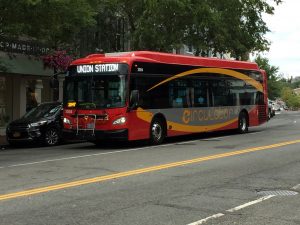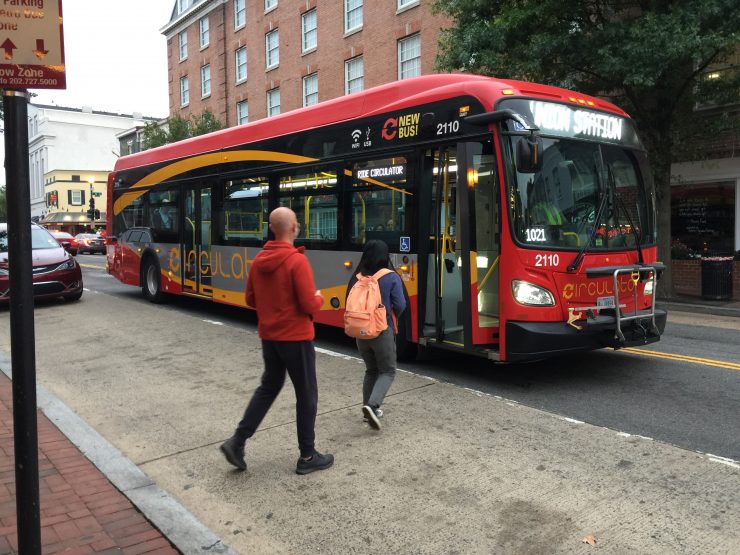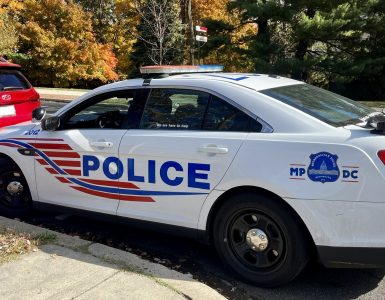Isabella Lucy is a graphic designer who has been riding the DC Circulator bus at no cost for the past eight months.
These free rides were courtesy of a price reduction in February. That all came to an end last Tuesday when fares jumped back up to a dollar a ride.
“I would say that knowing I had a way to get across town that was completely free made me more inclined to jumping on the bus as opposed to thinking ‘oh, I have to pay a dollar, to pay two dollars to get somewhere,’” Lucy said. She also said that the price reduction “of course” helped her.
District Mayor Muriel Bowser removed the fares from Circulator buses as a part of her Fair Shot February campaign. Circulator lines spread not just through Georgetown, but also places like the National Mall, Dupont Circle and Union Station.
The efforts to save the free Circulator rides culminated in the city council’s transportation committee holding a hearing over an extension and voting on legislation put forward by Ward 4’s Brandon Todd. Bowser supported the legislation.
“It is true: for some, the $1 fare is nominal; for many others, though—especially for our most vulnerable neighbors—it is prohibitive,” said Bowser in a June statement, urging the council to take up Todd’s bill.
The committee, led by Councilwoman Mary Cheh of Ward 3, nixed the bill and the deadline passed with no resolution put forward.

Advocates also echo how costly transportation can be for commuters. Cheryl Cort, the policy director at the Coalition for Smarter Growth, told The Wash transportation is the second largest cost for families besides housing.
Cort said that the circulators are meant for one specific purpose–to run buses every 10 minutes between “centers of activity” and that the city shouldn’t take all of the bus systems and replace them with circulators.
Instead, Cort says that a better way to combat the problem would be to introduce a new program similar to Kids Ride Free for low-income transit riders, whom she says make up a majority of the transit-taking population.
“There’s no reason why the city couldn’t provide a different kind of fare program,” Cort said.
Cort also pointed to the recommendations of the Bus Transformation Project, which also pointed to a program for low-income riders.
Nicole Sheynin is a senior at Georgetown University and lives off-campus at an apartment in Burleith, where the circulator was a far more attractive option for transportation. Now, though, she takes cost into account.
“It’s not like it makes a huge dent, but definitely when it was free, I was like ‘oh, why not take this’ and not use a different method. Now I’d be more likely to walk or take another bus,” Sheynin said.
One criticism of the Circulator fare removal was that Circulator traveled through predominantly wealthy neighborhoods, such as Georgetown, which also sees a high rate of tourism, particularly because of the commercial appeal of shopping and the harbor.
“It’s weird because as a student, I don’t feel like I fit into the traditional ‘wealthy Georgetown resident’ demographic,” Sheynin said laughing. “I fit into the ‘broke college student demographic’.”
At the end of the day, Sheynin said that the free rides were a nice step.
“I know some other cities that do some kind of method of free public transportation. It just feels like you’re taken care of by the city in that sense,” Sheynin said.















Add comment